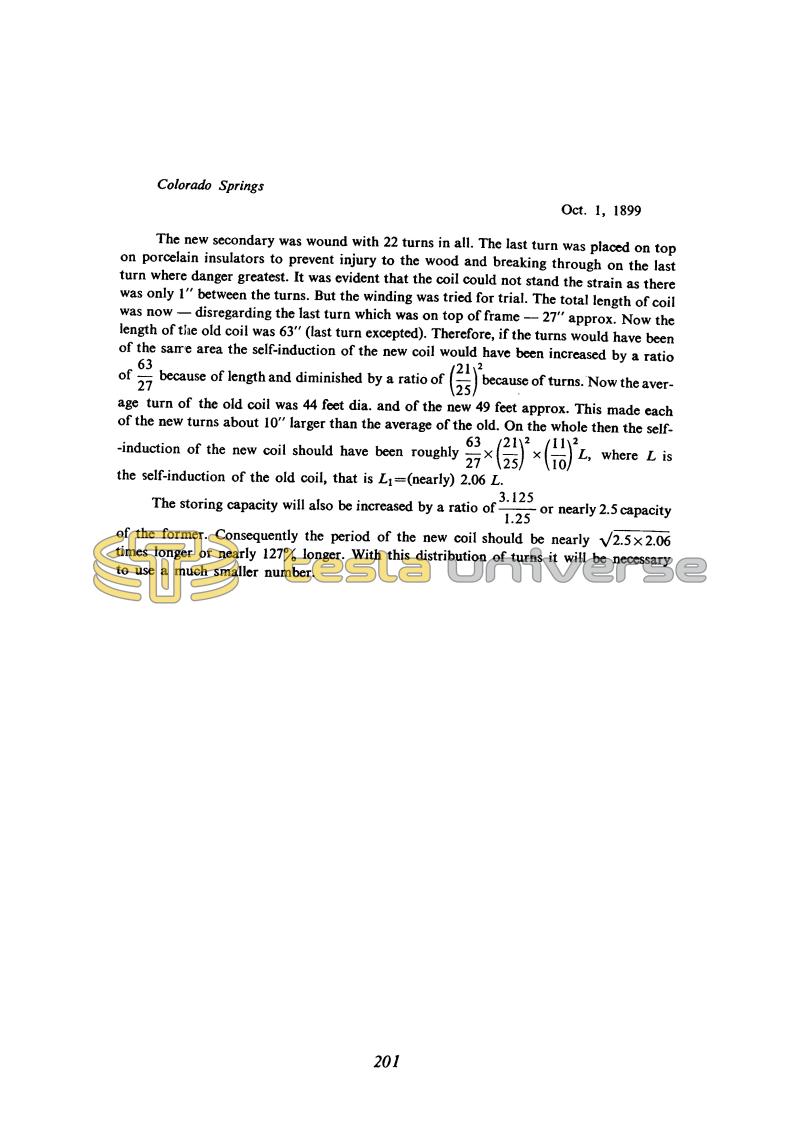
Nikola Tesla Books
Colorado Springs
Oct. 1, 1899
The new secondary was wound with 22 turns in all. The last turn was placed on top on porcelain insulators to prevent injury to the wood and breaking through on the last turn where danger greatest. It was evident that the coil could not stand the strain as there was only 1" between the turns. But the winding was tried for trial. The total length of coil was now - disregarding the last turn which was on top of frame - 27" approx. Now the length of the old coil was 63" (last turn excepted). Therefore, if the turns would have been of the same area the self-induction of the new coil would have been increased by a ratio of !$ {63 \over 27} !$ because of length and diminished by a ratio of !$ {\left({21 \over 25}\right)^{2}} !$ because of turns. Now the average turn of the old coil was 44 feet dia. and of the new 49 feet approx. This made each of the new turns about 10" larger than the average of the old. On the whole then the self-induction of the new coil should have been roughly !$ {{63 \over 27} \times {\left({21 \over 25}\right)^{2}} \times {\left({11 \over 10}\right)^{2}} L} !$, where L is the self-induction of the old coil, that is L1 = (nearly) 2.06 L.
The storing capacity will also be increased by a ratio of !$ {3.125 \over 1.25} !$ or nearly 2.5 capacity of the former. Consequently the period of the new coil should be nearly !$ {\sqrt{{2.5 \times 2.06}}} !$ times longer or nearly 127% longer. With this distribution of turns it will be necessary to use a much smaller number.
201
October 1-2
Tesla constructs and tests a new secondary with 22 turns. Coil turns are positioned so that the distance amongst them is changed starting from the grounded terminal. He chooses the construction which enables approximately the same resonant frequencies as the previous secondary (please see Sept. 22). The new secondary had less turns and shorter length. Finally he chooses 18 turns.

